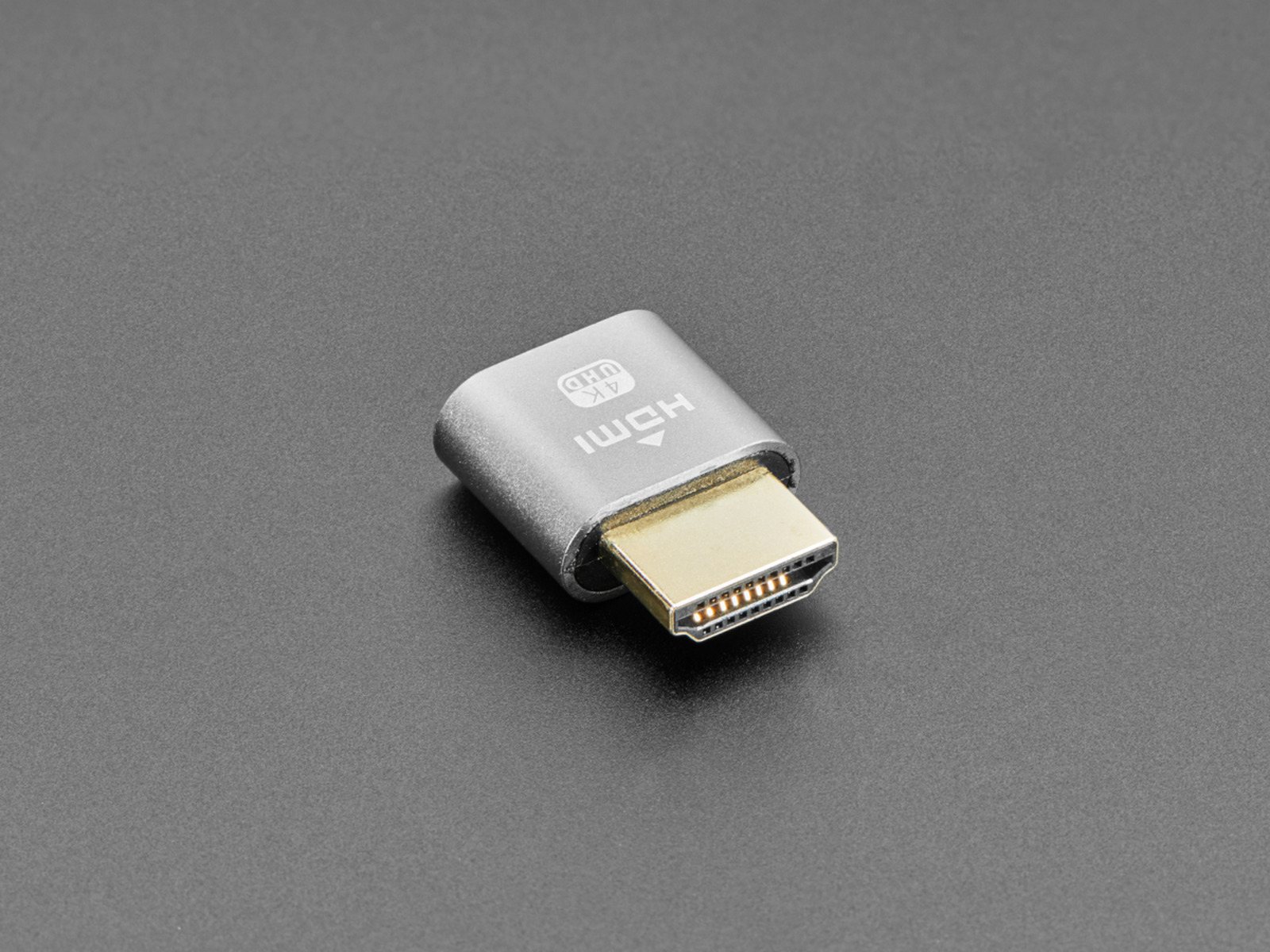Introduction
Welcome to the world of Bitcoin, where digital currency meets decentralization and innovation. Bitcoin has taken the financial world by storm, revolutionizing the way we perceive and transact money. In this article, we will delve into the fascinating world of Bitcoin and explore how it works, even for those of us who are not tech-savvy.
Bitcoin, often referred to as a cryptocurrency, was created in 2009 by an anonymous individual (or group) known as Satoshi Nakamoto. It is a decentralized digital currency that operates independently of any central authority, such as banks or governments.
Unlike traditional currencies, Bitcoin is not physically printed or regulated by a central bank. Instead, it is generated through a process called “mining,” which we will explore in more detail later. Bitcoin transactions are stored on a public ledger known as the blockchain, which ensures transparency and security.
Bitcoin has gained significant popularity over the years due to its potential for lower transaction fees, faster cross-border payments, and the ability to bypass intermediaries. It has also caught the attention of investors as its value has soared, making early adopters millionaires overnight.
In this article, we will unravel the mysteries of Bitcoin and provide you with a simplified understanding of how it works, without overwhelming you with technical jargon. Whether you are a curious individual looking to learn more about this digital phenomenon or considering using Bitcoin for your own transactions, this guide is designed to help you navigate the world of Bitcoin with ease and confidence.
What Is Bitcoin?
Bitcoin is a decentralized digital currency that allows for peer-to-peer transactions without the need for intermediaries like banks or governments. It operates on a technology called blockchain, which is a public ledger that records all transactions made with Bitcoin. Each transaction is verified by network nodes through cryptography, making the system secure and transparent.
Unlike traditional fiat currencies, such as the US Dollar or Euro, Bitcoin is not printed or regulated by a central authority. Instead, it is “mined” by computers solving mathematical equations. This process involves powerful computers competing to solve complex algorithms, and the miners who successfully solve them are rewarded with newly created Bitcoins.
Bitcoin is known for its finite supply, with a maximum of 21 million Bitcoins that can ever be created. This scarcity contributes to its value and has led to a perception of Bitcoin as “digital gold.” It can be divided into smaller units, with the smallest unit being a “satoshi,” named after the mysterious creator of Bitcoin, Satoshi Nakamoto.
One of the key features of Bitcoin is its decentralization. Unlike traditional banking systems, where a central authority controls and regulates the flow of money, Bitcoin allows users to have full control over their funds. Individuals can send and receive Bitcoins directly, without the need for a middleman.
Bitcoin transactions are pseudonymous, meaning that while the transaction details are recorded on the blockchain, the identities of the parties involved are not directly linked to the transactions. However, it is important to note that Bitcoin transactions are not entirely anonymous, as some blockchain analysis techniques can uncover the real-world identities behind certain transactions.
Overall, Bitcoin offers a new way to conduct financial transactions, removing the need for intermediaries and providing individuals with greater control over their money. Its decentralized nature and potential for lower transaction fees have made it an attractive option for those seeking alternatives to traditional banking systems.
How Is Bitcoin Created?
Bitcoin is created through a process called mining. Mining involves using powerful computers to solve complex mathematical problems, which results in the addition of new blocks to the Bitcoin blockchain. Miners compete to solve these problems, and the first one to find a solution is rewarded with freshly minted Bitcoins.
When a miner successfully solves a problem, they create a new block containing a list of recent Bitcoin transactions. This block is added to the blockchain, making the transactions it contains permanent and irreversible. Miners play a crucial role in securing the network and ensuring the validity of transactions.
To incentivize miners to contribute their computing power to the network, a reward is offered for each successfully mined block. Initially, the reward was set at 50 Bitcoins, but it is halved every 210,000 blocks, or approximately every four years. This reduction in mining rewards is known as the “halving” and is designed to simulate the scarcity of gold.
As of now, the mining reward stands at 6.25 Bitcoins per block. However, it’s important to note that mining Bitcoin has become increasingly challenging and requires specialized hardware and significant electricity consumption. This means that individual miners often join forces in mining pools to increase their chances of solving blocks and earning rewards.
Bitcoin mining also serves another crucial purpose: maintaining the integrity and security of the blockchain. The more computing power dedicated to mining, the stronger the network becomes, making it more resistant to malicious attacks. Miners verify transactions and ensure that no double-spending occurs, where a user tries to spend the same Bitcoins more than once.
It’s worth noting that the mining process requires a considerable amount of energy. Critics argue that the energy consumption associated with Bitcoin mining contributes to environmental degradation. However, there are ongoing efforts to develop more energy-efficient mining methods and promote the use of renewable energy sources in the mining process.
Overall, the creation of Bitcoin through mining plays a vital role in maintaining the decentralization, security, and integrity of the network. The process ensures a steady supply of new Bitcoins while incentivizing individuals to contribute their computational power to support the Bitcoin ecosystem.
What Is a Blockchain?
A blockchain is a decentralized and transparent digital ledger that records all transactions made with a particular cryptocurrency, such as Bitcoin. It is often described as a chain of blocks because each transaction is grouped together in a block, which is then added to the chain.
The blockchain serves as a public ledger that can be accessed and verified by anyone on the network. This transparency and immutability are achieved through a combination of cryptography and distributed consensus algorithms.
In the case of Bitcoin, the blockchain is used to record all transactions made with Bitcoin. Each transaction is bundled with other transactions into a block. Once a block is filled with transactions, it is added to the blockchain and becomes a permanent part of the transaction history.
One of the key features of a blockchain is that it is decentralized. Instead of relying on a single central authority to verify and validate transactions, the blockchain relies on a network of computers, known as nodes, spread across the globe. These nodes collaborate to maintain the blockchain and reach a consensus on the validity of transactions.
Transactions recorded on the blockchain are secured through cryptographic techniques. Each transaction is linked to the previous transaction through a cryptographic hash, creating a chain of blocks. This makes it nearly impossible to alter past transactions without also altering all subsequent blocks, making the blockchain resistant to tampering and fraud.
Additionally, the use of a distributed consensus algorithm, such as Proof of Work (PoW) or Proof of Stake (PoS), ensures that all nodes on the network agree on the order and validity of transactions. This consensus mechanism adds another layer of security and prevents double-spending, where someone tries to spend the same cryptocurrency units more than once.
Blockchain technology has the potential to revolutionize not only finance but also other industries. Its decentralized, transparent, and secure nature makes it suitable for applications such as supply chain management, voting systems, and even digital identity verification.
While Bitcoin was the first application of blockchain technology, numerous other cryptocurrencies and blockchain platforms have emerged, each with its own unique features and use cases. As the technology continues to evolve, we can expect to see further advancements and innovative applications of blockchain in various fields.
How Are Transactions Verified?
In the world of cryptocurrencies like Bitcoin, transactions are verified through a process known as consensus. This process ensures that all transactions recorded on the blockchain are valid and cannot be tampered with.
When a user initiates a transaction, it is broadcasted to the entire network of nodes. These nodes, which can be individual computers or specialized servers, collaborate to validate the transaction and ensure its integrity. The verification process involves several steps:
- Transaction Propagation: The transaction is broadcasted to the network, and each node receives a copy of the transaction.
- Validation: Each node independently validates the transaction by checking if it adheres to the predefined rules of the cryptocurrency. These rules can include checking if the sender has sufficient funds and verifying the digital signatures.
- Propagation to Other Nodes: If a node validates the transaction successfully, it propagates it to other nodes in the network.
- Consensus: Nodes collaborate to reach a consensus on the validity of the transaction. This is achieved through consensus mechanisms such as Proof of Work (PoW) or Proof of Stake (PoS).
- Confirmation: Once the transaction receives sufficient confirmations from the network (often represented by the number of blocks that have been added to the blockchain after the transaction), it is considered finalized and irreversible.
Proof of Work (PoW) is the most widely used consensus mechanism in cryptocurrencies like Bitcoin. In PoW, miners compete to solve complex mathematical puzzles, requiring substantial computational power. The first miner to solve the puzzle receives a reward and broadcasts the solution along with the validated block of transactions.
Other nodes then verify the solution and, if correct, add the block to their copy of the blockchain. This process not only validates the transaction but also adds a new block to the blockchain, ensuring its integrity and security.
Proof of Stake (PoS) is an alternative consensus mechanism where validators are chosen to create new blocks based on the number of coins they hold and have at stake. Validators are selected randomly, reducing the need for intense computational power and energy consumption.
Once a transaction is verified and added to the blockchain, it becomes a permanent part of the transaction history. This immutability ensures that all transactions are transparent, secure, and resistant to tampering.
Overall, the process of transaction verification in cryptocurrencies relies on the collaboration of nodes, the use of consensus mechanisms, and the immutability of the blockchain. Through these mechanisms, cryptocurrencies like Bitcoin can provide secure and decentralized digital transactions.
How Are Wallets Used?
In the world of cryptocurrencies, wallets are used to store, manage, and interact with digital assets such as Bitcoin. They serve as digital containers for private and public keys, which are essential for securely accessing and transacting with cryptocurrencies.
A cryptocurrency wallet does not contain the actual coins but rather the cryptographic information required to access and control them. These wallets come in various forms, including software wallets, hardware wallets, and online wallets.
Software Wallets: Software wallets can be installed on computers or mobile devices. They generate and store private keys locally, providing users with control and ownership of their keys. Examples include desktop wallets, mobile wallets, and multi-platform wallets that can be accessed on different devices.
Hardware Wallets: Hardware wallets are physical devices designed to securely store private keys offline. They often resemble USB drives and are considered one of the most secure ways to store cryptocurrencies. Hardware wallets keep the keys isolated from online threats, reducing the risk of unauthorized access or theft.
Online Wallets: Online wallets, or web wallets, are wallets hosted on cloud-based platforms. They are accessible through web browsers and allow users to access and manage their cryptocurrency holdings from anywhere with an internet connection. While convenient, online wallets may carry security risks since the private keys are stored on remote servers.
Regardless of the type of wallet used, they all serve the primary purpose of storing and managing private keys. Private keys are essential for signing transactions and proving ownership of cryptocurrency assets. It is crucial to keep private keys secure and protected, as losing or compromising them can result in the loss of access to funds.
When using a cryptocurrency wallet, users can perform various actions:
- Receiving: Wallets provide users with a unique public address that they can share with others to receive funds. When a transaction is made to this address, the wallet owner can see the incoming transaction in their wallet balance.
- Sending: To send cryptocurrencies, users need to input the recipient’s public address and the desired amount. The wallet then generates a transaction, which is signed with the private key to verify the authenticity of the sender.
- Managing: Wallets allow users to view their transaction history, check their balances, and organize different cryptocurrency holdings within the same wallet.
- Security: Wallets often include additional security features, such as two-factor authentication (2FA) and backup options, to safeguard funds and ensure the protection of private keys.
It’s important to note that while wallets provide a secure means of managing cryptocurrencies, users must also exercise caution and follow best practices such as keeping software up to date, using strong passwords, and employing additional security measures like hardware wallets for storing large amounts of cryptocurrency.
In summary, wallets are indispensable tools for interacting with cryptocurrencies. They securely store private keys and facilitate sending, receiving, and managing digital assets. By choosing the right type of wallet and implementing good security practices, users can confidently engage in the world of cryptocurrencies and take control of their financial assets.
Risks and Benefits of Using Bitcoin
Using Bitcoin and other cryptocurrencies provides various benefits and opportunities for users, but it also comes with its share of risks and challenges. Let’s explore the advantages and disadvantages of using Bitcoin:
Benefits:
Decentralization: Bitcoin operates on a decentralized network, meaning that transactions can be conducted directly between individuals without the need for intermediaries. This decentralized nature provides users with greater control over their funds and reduces reliance on traditional banking systems.
Lower Transaction Fees: Compared to traditional financial systems, Bitcoin transactions often come with lower fees, especially for cross-border payments. This makes Bitcoin an attractive option for individuals and businesses conducting international transactions.
Fast and Borderless Transactions: Bitcoin transactions can be processed quickly, enabling near-instantaneous transfers of funds. Additionally, Bitcoin’s global nature means that transactions can be conducted across borders without the need for currency conversions or traditional banking intermediaries.
Security and Privacy: Bitcoin transactions utilize cryptographic techniques, creating a secure and tamper-resistant system. Additionally, while transactions are recorded on the public blockchain, users’ identities are pseudonymous, offering a certain level of privacy.
Risks:
Volatility: Bitcoin’s price can experience significant volatility, which can result in potential gains or losses for investors and users. The price fluctuations make it important for users to monitor the market and be aware of the potential risks associated with the cryptocurrency.
Regulatory Uncertainty: Bitcoin operates in a relatively new and constantly evolving regulatory environment. Government regulations or restrictions on Bitcoin could impact its usage and value, making it essential for users to stay updated on legal and regulatory developments.
Cybersecurity Risks: While Bitcoin itself has proven to be secure, the digital nature of cryptocurrencies makes them susceptible to hacking and cyber-attacks. Users must take proper security measures, such as using strong passwords, enabling two-factor authentication, and storing their Bitcoins in secure wallets.
Limited Acceptance: While adoption of Bitcoin is growing, it is still not widely accepted as a form of payment by merchants, making it less practical for day-to-day transactions. However, the expanding ecosystem and increasing adoption of cryptocurrencies may improve the acceptance in the future.
It is important for individuals to weigh the benefits and risks when considering the use of Bitcoin. While it presents opportunities for financial freedom, faster transactions, and reduced fees, users must also consider the potential risks and challenges associated with price volatility, regulatory uncertainty, cybersecurity risks, and limited acceptance.
The Future of Bitcoin
The future of Bitcoin holds both excitement and uncertainty as the cryptocurrency continues to evolve and gain mainstream attention. Here are some key factors that could shape the future of Bitcoin:
Increased Adoption:
Bitcoin’s adoption has been steadily growing over the years, with more individuals and institutions recognizing its potential as a digital currency. As more people embrace Bitcoin and use it for everyday transactions, its value and utility are expected to increase, further driving adoption.
Regulatory Developments:
The regulatory environment surrounding cryptocurrencies is still being shaped, with governments and regulatory bodies exploring ways to monitor and govern digital currencies. Clearer regulations that provide guidance and establish a framework for businesses and individuals to operate within can potentially boost the confidence in Bitcoin and its wider acceptance.
Technological Advancements:
The underlying technology behind Bitcoin, blockchain, continues to evolve and improve. Scalability solutions, such as the Lightning Network, aim to address the challenge of processing a large number of transactions quickly and at low fees. Advancements in security measures and user-friendly interfaces will play a crucial role in making Bitcoin more accessible to the general public.
Institutional Investment:
The involvement of institutional investors, such as hedge funds, asset management firms, and corporations, has been increasing in the Bitcoin market. Institutional investment brings liquidity, stability, and validation to the cryptocurrency, providing a favorable environment for further growth and acceptance.
Integration with Traditional Financial System:
As the lines between cryptocurrencies and traditional financial systems blur, Bitcoin is expected to become more integrated into the existing financial infrastructure. The integration of Bitcoin into payment processors, banks, and online platforms could make it easier for people to use Bitcoin for everyday transactions and increase its mainstream adoption.
Global Economic Instability:
In times of economic uncertainty or crisis, cryptocurrencies like Bitcoin often become a perceived safe-haven asset. If global economic instability persists, more individuals may turn to Bitcoin as a hedge against inflation and economic downturns, leading to increased adoption and value.
While the future of Bitcoin is promising, it is essential to recognize that the cryptocurrency market is still relatively young and can be subject to rapid changes. As the technology and ecosystem continue to evolve, it is crucial for investors and users to stay informed, exercise caution, and adapt to the evolving landscape of Bitcoin.
Conclusion
In conclusion, Bitcoin has emerged as a groundbreaking digital currency that offers decentralization, security, and control over financial transactions. Its underlying technology, blockchain, has the potential to revolutionize various industries beyond finance.
Bitcoin’s decentralized nature enables peer-to-peer transactions without the need for intermediaries, providing individuals with greater autonomy and reducing transaction costs. Its global accessibility and near-instantaneous transfers make it an attractive option for cross-border payments.
However, using Bitcoin comes with risks, such as price volatility, regulatory uncertainties, and cybersecurity threats. It is crucial for users to exercise caution, stay updated on regulations, and implement strong security measures to protect their assets.
The future of Bitcoin is promising, with increased adoption, regulatory developments, technological advancements, and institutional investment driving its growth. As the world becomes more familiar with cryptocurrencies, Bitcoin’s integration into the traditional financial system may become more widespread.
While Bitcoin has its challenges, its potential to reshape finance and empower individuals cannot be overlooked. As the cryptocurrency ecosystem continues to evolve, it is important for users to stay informed, adapt to changes, and seize the opportunities presented by this digital revolution.
Whether you are a curious observer or a potential user, understanding the basics of Bitcoin can empower you to navigate this new financial landscape and make informed decisions about its usage. As technology and adoption progress, Bitcoin has the potential to redefine how we perceive and transact with money in the years to come.

























